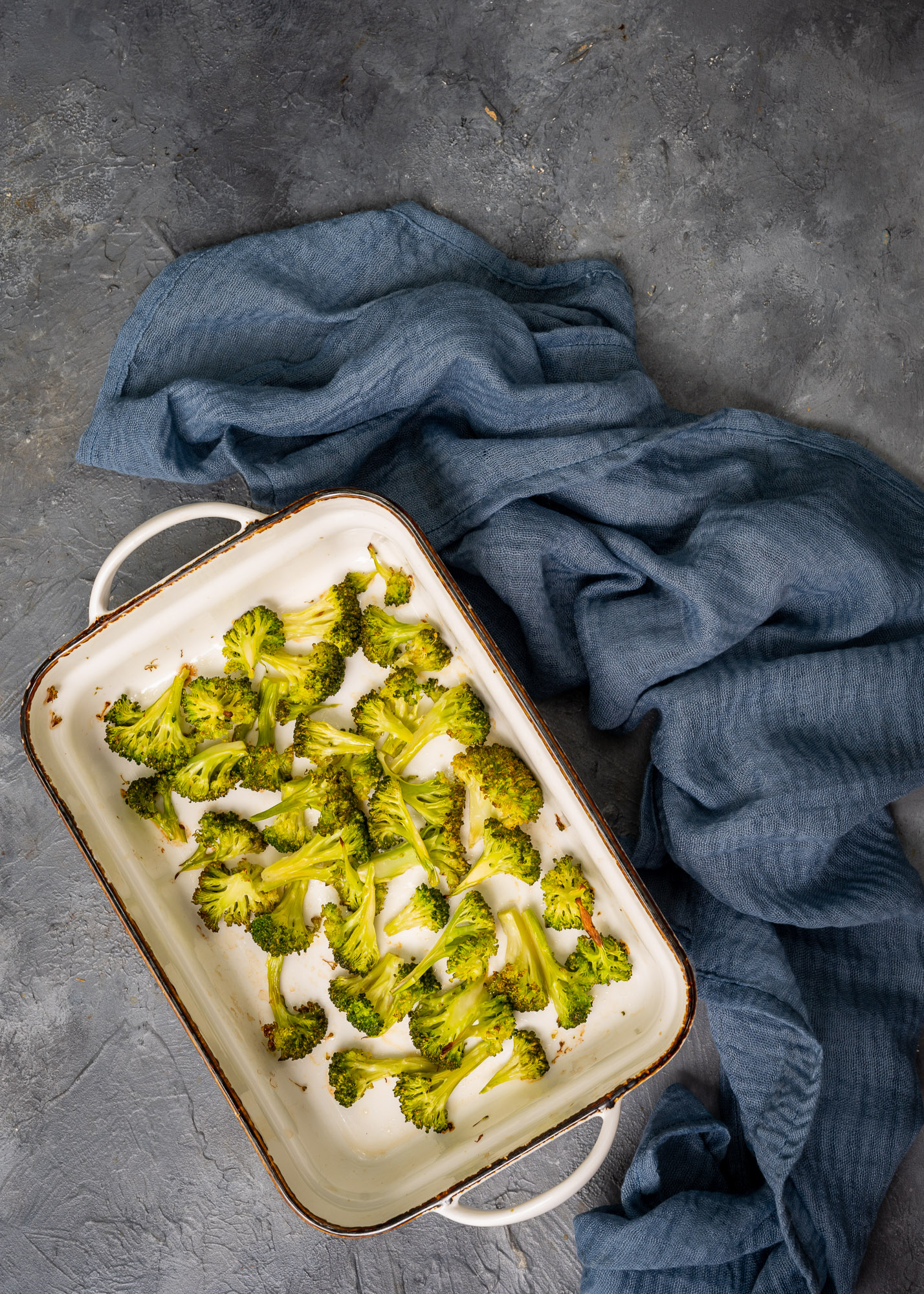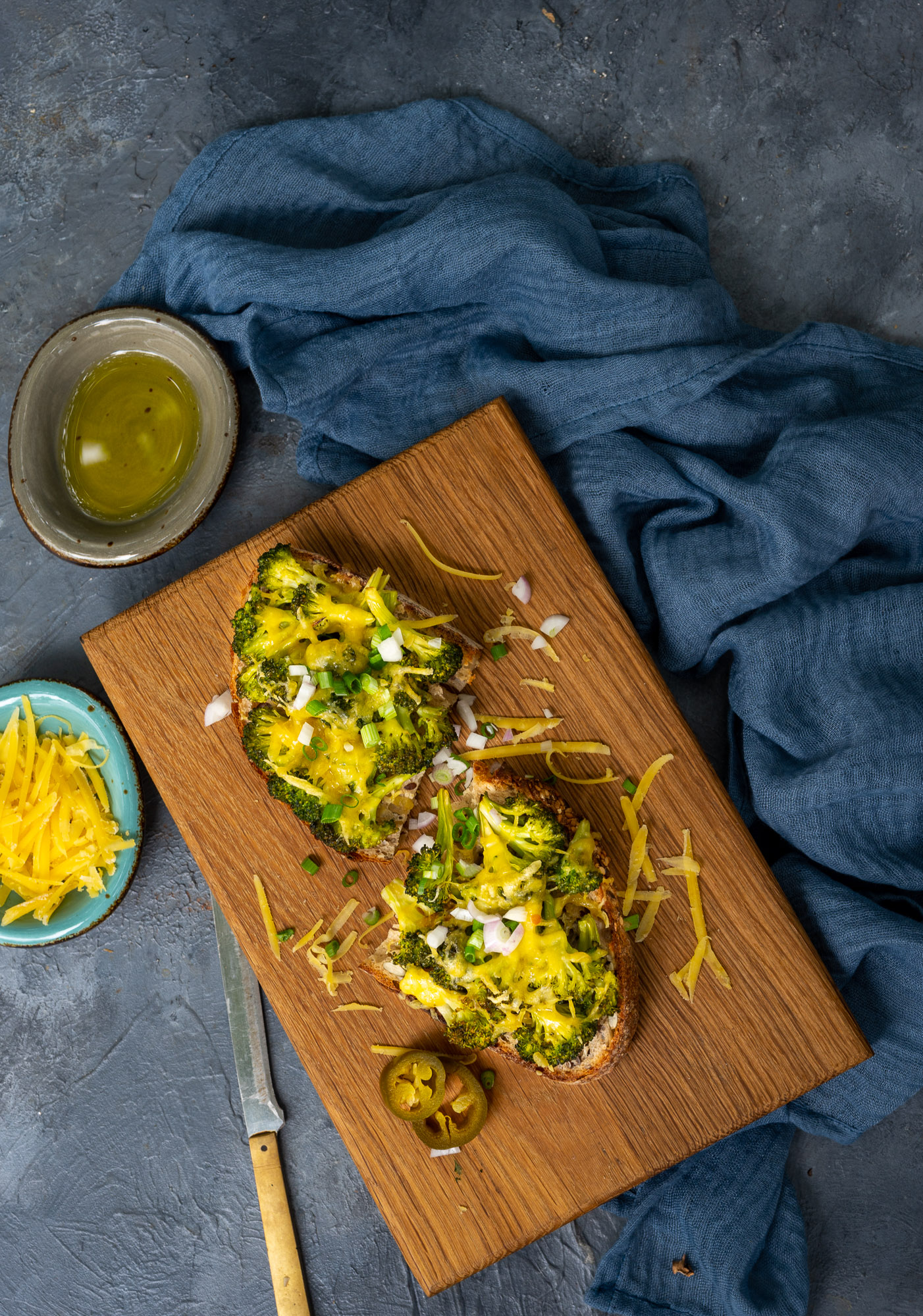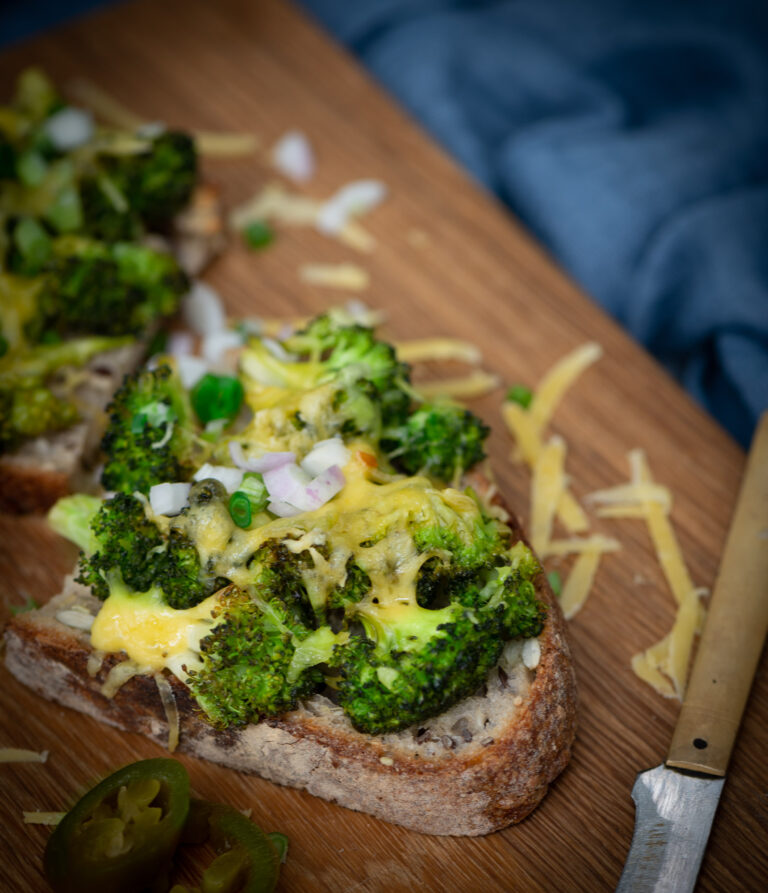I believe that there is nothing like a homemade bread, and this especially true if it’s a sourdough. I happen to bake sourdough at home, as you may know either from my Instagram or from previous sharings on this blog. When the sourdough is fresh, I have it either plain or dipped in olive oil as a meal accompaniment. When it’s a day or two old, I like to have it toasted, with different toppings. This broccoli toast is one of them.
As I always say and often repeat, you can make your own version of a dish like this. You may have enjoyed some of my earlier variations, such as: cheesy garlic toast and pesto-parmesan toastie. You can play around with the individual ingredients that go over the toast base too. I have used a local cheddar cheese, for instance. If you want to go even more local, and you’re in India like me, you can add crumbled paneer on top. If you are vegan, crumbled tofu works well instead.
It’s good to have some protein with your carbs and your veggies, so even a simple toast can become a fully nourishing dish. You may have noticed that after a long battle with carbs, I don’t like to diss them anymore. I now think that they are best had in controlled portions, alongside proteins and vegetables. That’s the trick not just to a healthy meal, but to fulfilling your cravings too!
I like to have this broccoli toast as an in-between snack, a filler when I know my dinner is going to be late. At times, it is my dinner itself, along with a bowl of soup. I occasionally even have it as a breakfast. Like any toast, it’s for any time.

Broccoli Sourdough Toast
(Serves 2)
1 big sourdough slice
2 cups broccoli (cut into small florets)
Salt to taste
1 teaspoon chili flakes
½ cup grated cheese
1 teaspoon olive oil
2 tablespoons finely chopped spring onions
Preheat the oven to 180°C.
Roast the broccoli in the oven along with a sprinkle of salt and a drizzle of olive oil. If you want to take it up a notch, you can caramelise it with a pinch or two of sugar. This really elevates the flavour. Once slightly charred, set aside.
Take a slice of sourdough and spread the roasted broccoli over it. If you like, you can lay the roasted broccoli on a bed of Greek yoghurt over the toast (if yoghurt on toast is something you’re interested in, do check out this cherry tomato yoghurt toast recipe).
Drizzle a little olive oil on top. Now, sprinkle some cheese and toast in the oven until the base of the bread slice is browned.
Remove from the oven and sprinkle some of the spring onions for garnishing. Cut the toast into 2 pieces. Serve hot.
I hope you’ll enjoy this broccoli sourdough toast. It’s one of the many ways in which I enjoy my literal “daily bread”!


